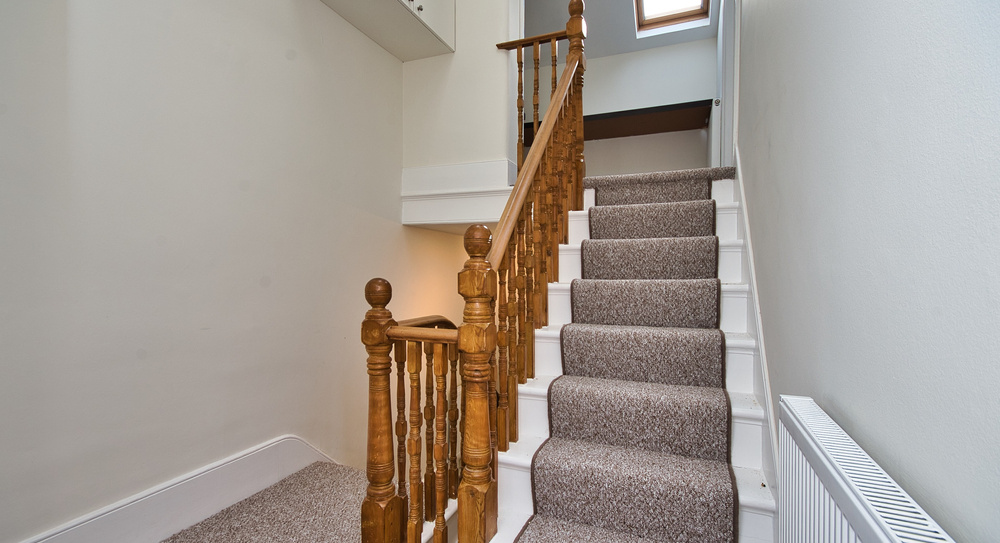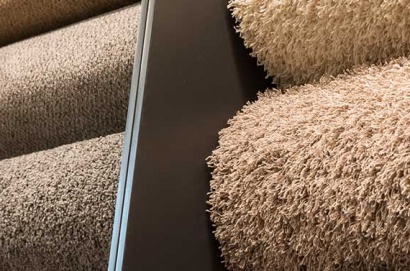Carpet runners on stairs are a stylish and practical addition to any home. They not only enhance the aesthetic appeal of your staircase but also provide safety, comfort, and noise reduction. Installing a carpet runner can seem like a daunting task, but with the right tools, materials, and knowledge, it can be a satisfying DIY project. This guide will walk you through the process of installing a carpet runner on your stairs and help you choose the best carpet types for the job.
Why Install a Carpet Runner?
Before diving into the installation process, it’s essential to understand the benefits of having a carpet runner on your stairs.
- Safety: One of the primary reasons homeowners opt for carpet runners is safety. Hardwood or tile stairs can be slippery, increasing the risk of falls, especially for children, elderly family members, and pets. A carpet runner adds traction, making each step more secure.
- Aesthetics: A well-chosen carpet runner can transform the look of your staircase, adding warmth, color, and texture to your home. Whether you prefer a modern, minimalist design or a more traditional, cozy feel, there’s a runner style that suits your taste.
- Noise Reduction: Stairs can be noisy, especially in homes with multiple levels. A carpet runner dampens the sound of footsteps, creating a quieter and more peaceful environment.
- Protection: A carpet runner also protects your stairs from wear and tear. Hardwood stairs, in particular, can suffer from scratches and dents over time. A runner acts as a buffer, preserving the condition of your stairs and prolonging their lifespan.
Choosing the Best Carpet for Your Runner
Selecting the right carpet is crucial for both the durability and appearance of your runner. Here are some factors to consider:
- Durability and Material:
- Wool: Wool is a popular choice for carpet runners due to its durability, softness, and natural resistance to stains and wear. It is a premium option that offers both comfort and longevity, making it worth the investment.
- Nylon: Nylon carpets are known for their strength and resistance to wear and tear, making them ideal for high-traffic areas like stairs. They are also more affordable than wool and come in a wide range of colors and patterns.
- Polypropylene (Olefin): This synthetic fiber is budget-friendly and highly resistant to stains and moisture. However, it is less durable than wool or nylon, so it might not last as long in areas with heavy foot traffic.
- Sisal: For a more natural, textured look, sisal is a great option. Made from the fibers of the agave plant, sisal carpets are incredibly durable and environmentally friendly. However, they are rougher underfoot and can be harder to clean.
- Pile Height and Density:
- Low Pile: A low-pile carpet (¾ inch or less) is the best choice for stairs as it provides a stable surface and is less likely to show signs of wear. Low-pile carpets are also easier to install and maintain.
- Density: The density of the carpet refers to how closely the fibers are packed together. A denser carpet will be more durable and resilient, making it a better option for high-traffic areas like stairs.
- Pattern and Color:
- Pattern: Patterns can add visual interest to your stairs, but it’s important to choose one that complements your home’s decor. Geometric patterns, stripes, and subtle textures are popular choices for stair runners. Consider a pattern that is forgiving of stains and dirt, as stairs tend to see more wear than other areas.
- Color: The color of your carpet runner should harmonize with the rest of your home’s color palette. Neutral tones like beige, gray, and taupe are versatile and timeless, while bolder colors can make a statement. Keep in mind that darker colors are better at hiding dirt and stains.
- Stain and Soil Resistance:
- Stain-Resistant Treatments: Many carpets come with stain-resistant treatments, which can be a lifesaver on stairs where spills and stains are more likely to occur. Look for carpets labeled as stain-resistant to ensure easier maintenance.
- Soil Resistance: Carpets with built-in soil resistance can help prevent dirt from settling into the fibers, keeping your runner looking cleaner for longer.
Installing a Carpet Runner on Stairs: Step-by-Step Guide
Once you’ve chosen the perfect carpet, it’s time to install your runner. Here’s a step-by-step guide to help you through the process:
- Measure Your Stairs:
- Start by measuring the width of your stairs to determine the width of the runner. Most runners are between 27 and 32 inches wide, depending on the width of your stairs and the desired look.
- Measure the length of the stairs, including the tread and riser of each step, to calculate the total length of the runner you’ll need. Don’t forget to account for any landings or turns in the staircase.
- Prepare Your Stairs:
- Clean the stairs thoroughly to remove any dust, dirt, or debris. This will help the runner adhere better and ensure a smooth installation.
- If your stairs are hardwood, consider applying a non-slip pad to each step. This will prevent the runner from slipping and protect your stairs.
- Cut the Carpet Runner:
- Based on your measurements, cut the carpet runner to the appropriate length. It’s always better to cut it slightly longer than needed, as you can trim the excess after installation.
- Attach the Carpet Padding:
- Carpet padding is optional but recommended for added comfort and protection. Cut the padding to fit each tread, leaving about an inch of space around the edges to prevent it from being visible under the runner.
- Staple the padding in place on each tread, ensuring it’s secure.
- Install the Carpet Runner:
- Start at the top of the stairs and work your way down. Center the runner on the first tread and secure it at the back of the tread with a staple gun. Place staples every few inches to ensure the runner is firmly attached.
- Pull the runner tight over the edge of the tread and down the riser, securing it with staples along the bottom edge of the riser. Continue this process for each step, making sure the runner remains centered and taut.
- If your stairs have landings, you may need to cut and seam the runner at the landing. Use carpet tape or a seaming iron to join the pieces together seamlessly.
- Finish the Installation:
- Once you reach the bottom of the stairs, trim any excess carpet and tuck the edges neatly under the last tread. Secure the end of the runner with a row of staples, ensuring it is firmly attached.
- Finally, check the entire length of the runner to make sure it is straight and secure. Make any necessary adjustments before finishing.
Final Thoughts
Installing a carpet runner on your stairs is a rewarding project that adds beauty, safety, and comfort to your home. By carefully selecting the right carpet material, pattern, and color, you can create a stunning staircase that complements your interior design while standing up to daily wear and tear. Whether you choose to tackle this project yourself or hire a professional, the result will be a stylish and functional addition to your home that you’ll enjoy for years to come.





